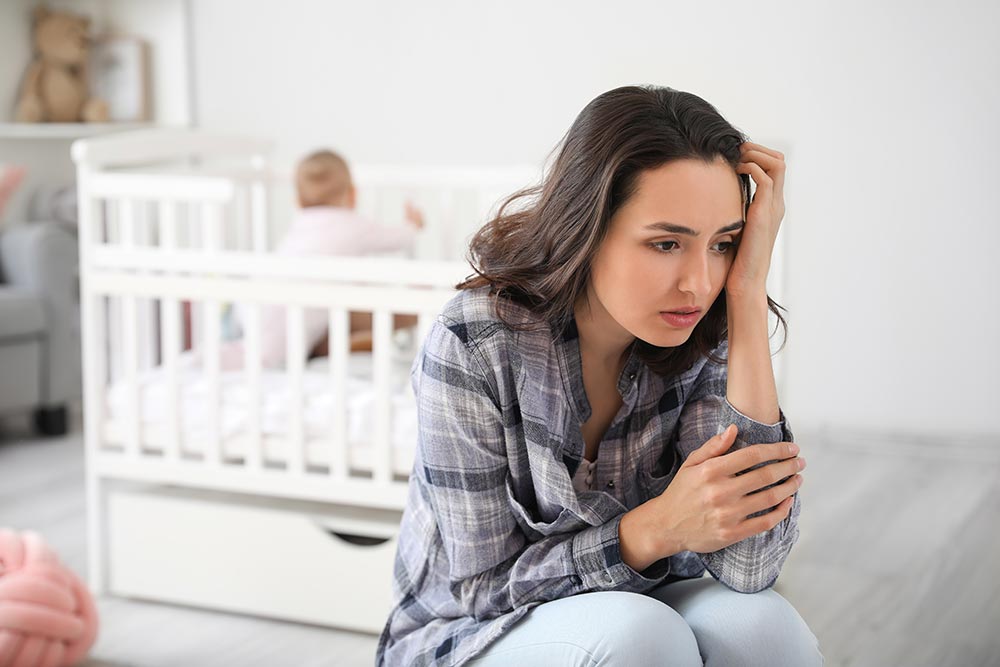
In part one, we broached the taboo of “women’s problems”. A bit of reading about Endometriosis Awareness Month in March and I was staggered about the huge impact our hormonal fluctuations can have on us as individuals, business and the economy.
As the editor of Veterinary Woman, it’s my aim to support women in the profession – and I couldn’t believe that, as a profession, we’ve not broached a subject which affects so many of us.
What follows is a summary of some of the most common conditions, and how they can impact women. In an increasingly female profession facing recruitment and retention challenges it would be prudent – if not essential – to accept, discuss and facilitate working through our hormonal lows.
Premenstrual syndrome
Around half of women aged 30 to 40 suffer from premenstrual syndrome (PMS) every month (even more in the peripubertal years). This fits with the figures from a survey of the Vet Mums community.
The stereotypical mood swings can be accompanied by:
- feeling upset, anxious or irritable
- tiredness or trouble sleeping
- bloating or abdominal pain
- breast tenderness
- headaches
- muscle and joint aches
- spotty skin or greasy hair
- changes in appetite (usually overeating or cravings)
- changes in sex drive
I’ve been told I have to put up and shut up, because since the beginning of human history, women have put up with these symptoms as part of life.
However, I don’t like myself when I’m having “a bad day”. I feel insecure about when I may next erupt, guilty for shouting at the children, annoyed that I’m snappy, and frustrated that I’m so tired. Throw in the monthly cycle of gastric upset, bloating and reduced athletic performance and – quite frankly – it sucks.
And that’s just the tip of the iceberg.
Many women suffer more extreme symptoms and for longer. Receiving more acceptance and accommodation, rather than eye-rolling, when I mention my “time of the month” would certainly make me feel less like a failure for a few days. This goes for work as well as home.
Endometriosis
Endometriosis affects a whopping 1 in 10 women. This is a condition where hormonally active uterine cells are found elsewhere in the body. It is a chronic and debilitating condition that causes painful or heavy periods. It may also lead to infertility, fatigue and bowel and bladder problems.
Endometriosis has an estimated cost of £8.2 billion per year to the UK economy in terms of lost work, treatment and health care costs. Around 1.5 million women in the UK are currently living with the condition.
Nat Scroggie, founder of the infertility and baby loss support group, Vet MINDS, said: “One of the anxieties women may face after a diagnosis of endometriosis is whether this will affect their chances of conceiving. There is a link between reduced fertility and endometriosis, although this tends to be in women with moderate to severe endometriosis. Many of our members have experience of endometriosis, and we are here to offer support and understanding.”
March was Endometriosis Awareness Month. Employers are being encouraged to sign up to the Friendly Employer Scheme to help break the taboo and stigma around endometriosis and menstrual conditions. The scheme is designed to develop work environments where all staff are comfortable talking about possible practical adjustments that could be of benefit.
I would encourage all practices to take a look and open the door to discussions in case any of their staff are suffering in silence.
Premenstrual dysphoric disorder
Premenstrual dysphoric disorder (PMDD) is linked to a genetic difference in a woman’s molecular response to hormones, resulting in more severe mental and physical symptoms.
It is thought to affect about a million women in the UK; from 5% in women aged 30 to 40 years up to 23% around the menopause.
Nick Panay, professor of gynaecology at Imperial College London, said the condition means women can experience hallucinations, depression and psychosis. Symptoms include feeling upset, angry, anxious, hopeless, tense, feeling overwhelmed, lack of energy and loss of interest in things you normally enjoy. It can even lead to suicidal ideation.
As it is linked to a hormonal cycle, it can present similar to bipolar disorder, cycling through the highs of normality and crashing hormonal lows. The mental health charity Mind has some useful support resources (see “More information” panel at the bottom of this article). Treatment can include anti-depressants, hormone therapy, or even surgery.
“I had PMDD, went to the drastic extent of having my ovaries removed. Saved my marriage and my life. Definitely a taboo subject, so thanks for addressing it.”
Louise Littler, Vet Mums member
This past year in particular, I have really struggled with my hormones at work. I’m 44 and have always had bad PMS, but this past 18 months it got so severe I have found myself falling apart, spending days in tears and doing really silly things because of the brain fog. Not to mention being a witch at home, unable to cope with my children, noise, husband breathing near me… pretty much wanting to crawl under a rock for one week in four.
This is all very unlike me, I’m generally a very upbeat and even person, and I hated the person I turned into.
My GP was little use. “Try oil of evening primrose,” she said. I wanted to bop her one for those pearls of wisdom.
Thankfully, my sister is a doctor with a special interest in women’s health, and she said it sounded like PMDD. When I looked this up, it’s exactly me – so I pushed for a hospital referral and saw a lovely doctor at the PMS and menopause clinic who confirmed this and started me on an antidepressant.
I struggled with the concept at first as I’m generally the last person you’d think needed these meds, but I’m so glad I took them and rode out the side effects, as I am now so much more even and able to cope with the lows – both at home and at work.
Don’t give up ladies – these challenges are truly life-limiting and don’t have to be.
Dysmenorrhea
Dysmenorrhea is difficult or painful periods. It’s differentiated from severe PMS by the fact it causes a disruption in regular activities and lifestyle for one to two days per month.
It can be primary (unrelated to pelvic disease) or secondary, for example, to endometriosis, fibroids or cystic ovaries. Heavy bleeding can lead to anaemia, with the consequent effects on energy levels and general health.
Once secondary problems are ruled out, treatment revolves around pain control and hormonal interventions.
Fibroids
Fibroids (uterine leiomyomas) are most often found in women in their 30s and 40s. By the time women reach their 50s, 80% of us will have developed fibroids.
Symptoms can include heavy bleeding during periods, abdominal and lower back pain, constipation, and frequent urination. They can be asymptomatic and tend to regress after menopause.

Postnatal depression
The incidence of this cruel disorder is as high as 20% and can rob a mother of feelings of bonding with her baby. Symptoms include low mood, loss of interest, apathy and fatigue.
At the time of probably the greatest single life event a woman can experience, self-critical thinking, guilt and rumination, and reduced self-esteem and self-confidence can lead to thoughts of self-harm and even suicide. Sleep and appetite can also be affected.
One word associated with postnatal depression (PND) strikes a particular chord with me – hopelessness. In the absence of hope, there is no light at the end of the tunnel.
Recovery usually takes three to six months, but can take longer. Medication and talking therapies can be recommended.
Sadly, PND can affect family relationships in the longer term, too, although this is anecdotal from chatting to other mums. Lingering feelings of guilt about being a “bad mum” and not having bonded properly with their child. Not much is written about this – again, women suffering in silence.
Menopause
Menopause usually starts in women around the age of 50, but can be much earlier. The recent report on Menopause in the Veterinary Profession, conducted in partnership with SPVS revealed 75% of women experience unwelcome symptoms and in 25% the symptoms are severe. What’s more, symptoms last for four to eight years.
The website Menopause in the Workplace is very clear that this is an issue for men as well as women, affecting working and personal relationships. Men need to be willing and open to have conversation and support women in this time.
“I started menopause prematurely at it hit me hard. It took multiple trips to the doctor to get the right HRT sorted. At one stage I was having multiple hot flushes and hour and I could get palpitations to the point that I had to sit down.”
Anon, Vet Mums member.
What now?
If you’ve got this far – congratulations. You’ve actively engaged with taboos that pervasively eat into the happiness and health of many women.
Awareness if the first step to acceptance and fostering a feeling of belonging. If we were able to be more open and honest, without fearing judgement, allowances could be made to enable us to function better at work and at home. It may only be a small adjustment – such as a protected tea break – which prevents a headache developing into a full migraine.
It’s about time we face up to the fact we could, and should, give women a break when they’re “being hormonal”.

Leave a Reply